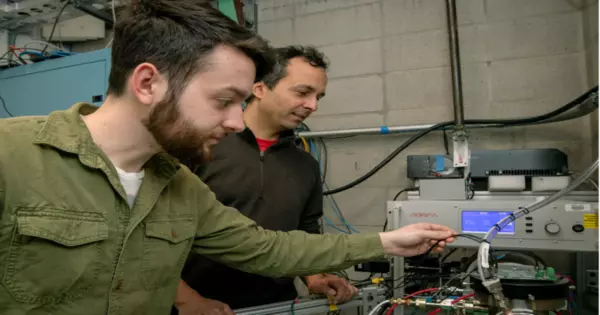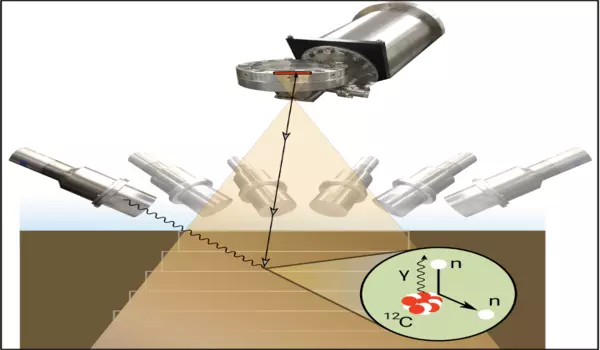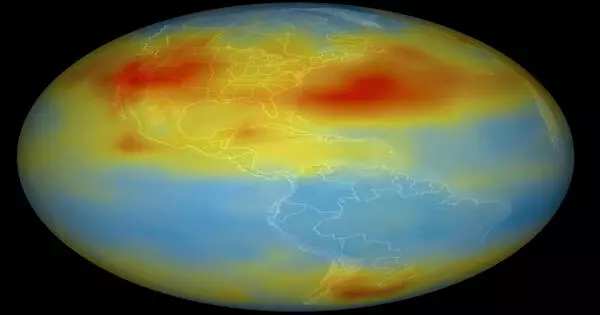Scientists devised a novel method for counting the amount of carbon in the ground beneath our feet—a critical tool for addressing climate change.
Scientists from the Department of Energy’s Lawrence Berkeley National Laboratory (Berkeley Lab) have collaborated to create a new approach for locating carbon stored in soil by plants and bacteria. Unlike all prior ways, this new technique, similar to an X-ray for the soil, allows you to view the carbon in the dirt without digging holes or taking soil samples. This novel technology for measuring carbon extracted from the atmosphere has the potential to be a valuable tool in combating climate change and establishing more environmentally friendly agricultural practices.
“What this equipment truly permits is repeated measurements over time,” said Arun Persaud, a physicist at Berkeley Lab and one of the team’s leaders. With our equipment, you can measure the total carbon in an acre of land very accurately and quickly, without disturbing the soil or harming the species that live there.
Carbon is naturally transferred into the soil by plants as part of their life cycle. Plants take in carbon dioxide and expel oxygen (which we animals then breathe in). The carbon remains in the plant, where it is used to construct the molecules and cells required for survival. A considerable portion of that carbon eventually reaches the soil via the plant’s roots. Microbes in the soil subsequently convert this carbon into organic matter, which can last for decades, centuries, or longer.

Plants and soil bacteria play an important role in the Earth’s carbon cycle, which humans have significantly affected. The use of fossil fuels quickly heats up the world. Human land usage for agriculture has depleted soil organic matter, resulting in a massive soil carbon deficit that also contributes to climate change.
Taking substantial amounts of carbon out of the atmosphere is a critical component of almost all strategies to keep global warming to 2 degrees Celsius or less. This need is driving Berkeley Lab’s Carbon Negative Initiative, which aims to develop technology for capturing, sequestering, and using carbon dioxide. Plants and bacteria are masters at removing carbon from the atmosphere, having done it for billions of years. However, before we can use them to assist in managing atmospheric carbon, we must first correctly estimate how much carbon is already trapped in the soil via plant-microbial interactions or other management measures. Unfortunately, existing methods for measuring soil carbon concentration are highly damaging and error-prone at large scales.
“We have a major limitation in understanding and quantifying how carbon enters and persists in soil because of the way that we measure it, Typically we would take a soil core sample from a position in a field and bring it back to the lab. Then we’d basically burn it and measure the carbon that’s released. It’s extremely laborious and costly to do that, and you don’t even know how representative those cores are.”
said Eoin Brodie, a Berkeley Lab scientist.
Because of the method we use to measure it, we have a huge constraint in understanding and quantifying how carbon enters and lingers in soil, said Eoin Brodie, a Berkeley Lab scientist. “Normally, we’d take a soil core sample from a specific location in the field and bring it back to the lab.” Then we’d basically burn it and count the amount of carbon released. That is highly time-consuming and expensive, and you have no idea how representative those cores are. “
Brodie is the Deputy Director of Berkeley Lab’s Climate and Ecosystem Sciences Division and one of the leaders of the EcoSENSE Program, which is part of the Biological and Environmental Program Integration Center (BioEPIC) that is currently being developed. Brodie and his colleagues hoped to find a better technique to quantify carbon in the soil as part of the EcoSENSE project, which aims to develop sensor suites to monitor the effects of climate and weather on ecosystem function. Brodie, Persaud, and their colleagues collaborated on this project due to the breadth of scientific knowledge available at Berkeley Lab and a timely call for submissions on below-ground sensor technology from DOE’s Advanced Research Projects Agency-Energy (ARPA-E). “What it actually took was communication across Berkeley Lab’s very varied programs,” Brodie explained.

“In the Accelerator Technology & Applied Physics (ATAP) Division, we became aware of this potentially helpful technology and joined forces.” Finally, the multidisciplinary team was awarded a grant from ARPA-Rhizosphere E’s Observations Optimizing Terrestrial Sequestration (ROOTS) program, which allowed them to carry out this research.
The Berkeley Lab team’s innovative measurement approach avoids the need to dig anything out of the ground at all. Instead, the as-yet-unnamed instrument uses a neutron beam to scan the soil. The detector then detects the feeble reaction of carbon and other elements in the soil to neutrons, allowing it to map the distribution of different elements inside the soil to a resolution of roughly five centimeters. All of this occurs above ground, with no holes, cores, or burning. It’s like giving the soil an MRI, explained Persaud, an ATAP staff scientist. “We receive a three-dimensional view of the soil and its carbon distribution, as well as other components like iron, silicon, oxygen, and aluminum, which are all critical for understanding carbon persistence in soil.”
“What particularly fascinates me about this neutron imaging technology is that it allows us to observe the carbon distributions in soils at the scales that carbon accounting requires,” Brodie remarked. “And we can do it over and over again during growing seasons to examine how it changes with different temperatures and land management approaches.” Eventually, you might be able to utilize this to determine whether specific land management strategies are more effective at removing carbon from the atmosphere and storing it in soil.
At the same time, this novel carbon sensing method exemplifies thinking outside the box and bringing together experts from varied disciplines, in this case physical sciences and earth science, to produce new technology addressing the issues of climate change, said Cameron Geddes, ATAP’s director.
Right now, the project is fresh out of the lab, and Persaud, Brodie, and their colleagues are set to put it to the test on actual soils in an outdoor system. “We’re really looking forward to testing this on the soil here at Berkeley Lab after the rainy season,” Persaud said.
“The next step is to make this process more field deployable and automated, so that it can be put into things like combine harvesters and tractors, so that it becomes part of the sensing capabilities that you find in fields and across forests,” Brodie added. “There’s a lot of potential in this.”
Mauricio Ayllon Unzuetaa, Bernhard Ludewigt, Brian Mak, Tanay Tak, and Arun Persaud, “An all-digital associated particle imaging system for the 3D measurement of isotopic distributions,” Review of Scientific Instruments, June 14, 2021.





